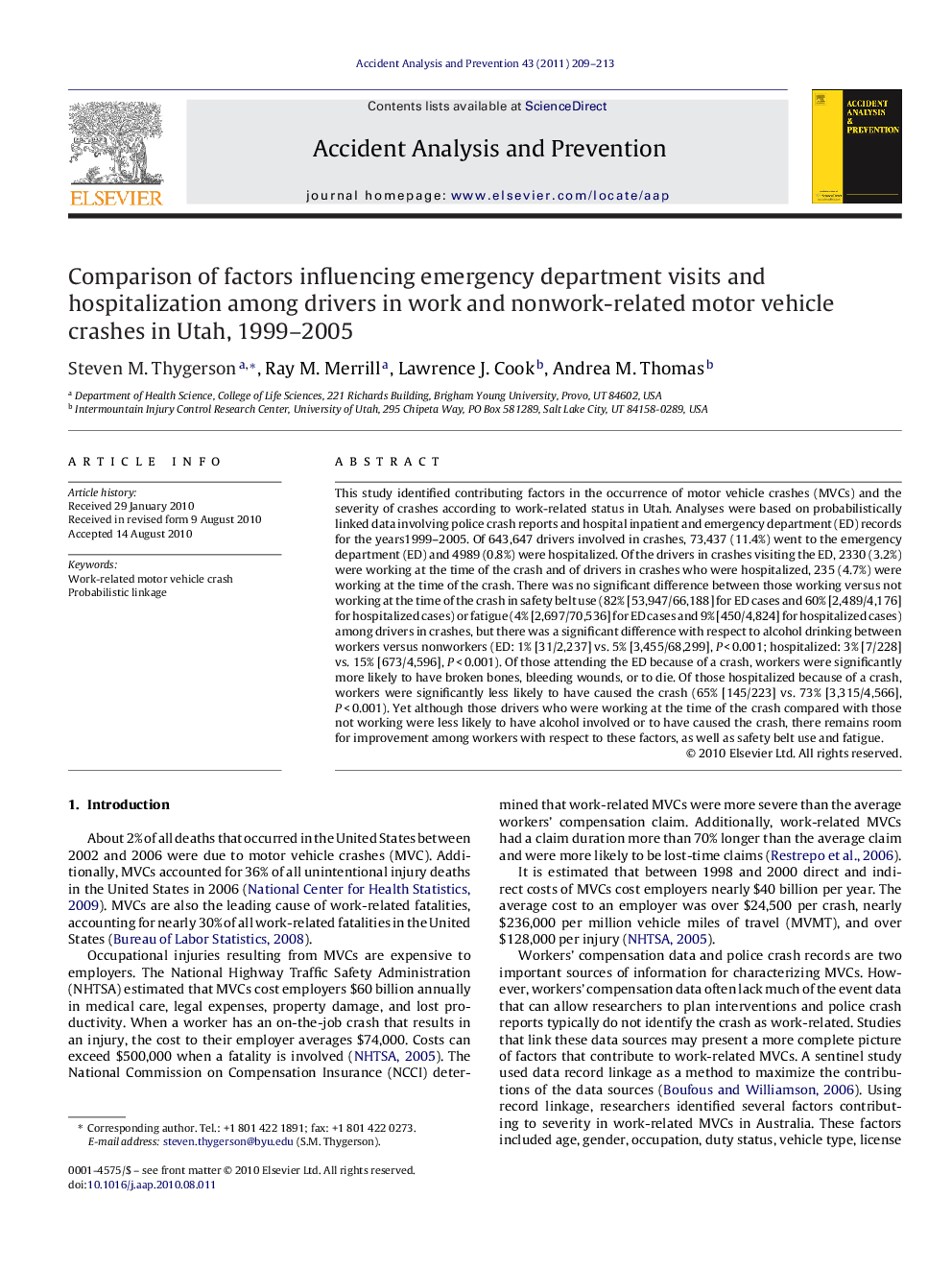| کد مقاله | کد نشریه | سال انتشار | مقاله انگلیسی | نسخه تمام متن |
|---|---|---|---|---|
| 572750 | 877377 | 2011 | 5 صفحه PDF | دانلود رایگان |

This study identified contributing factors in the occurrence of motor vehicle crashes (MVCs) and the severity of crashes according to work-related status in Utah. Analyses were based on probabilistically linked data involving police crash reports and hospital inpatient and emergency department (ED) records for the years1999–2005. Of 643,647 drivers involved in crashes, 73,437 (11.4%) went to the emergency department (ED) and 4989 (0.8%) were hospitalized. Of the drivers in crashes visiting the ED, 2330 (3.2%) were working at the time of the crash and of drivers in crashes who were hospitalized, 235 (4.7%) were working at the time of the crash. There was no significant difference between those working versus not working at the time of the crash in safety belt use (82% [53,947/66,188] for ED cases and 60% [2,489/4,176] for hospitalized cases) or fatigue (4% [2,697/70,536] for ED cases and 9% [450/4,824] for hospitalized cases) among drivers in crashes, but there was a significant difference with respect to alcohol drinking between workers versus nonworkers (ED: 1% [31/2,237] vs. 5% [3,455/68,299], P < 0.001; hospitalized: 3% [7/228] vs. 15% [673/4,596], P < 0.001). Of those attending the ED because of a crash, workers were significantly more likely to have broken bones, bleeding wounds, or to die. Of those hospitalized because of a crash, workers were significantly less likely to have caused the crash (65% [145/223] vs. 73% [3,315/4,566], P < 0.001). Yet although those drivers who were working at the time of the crash compared with those not working were less likely to have alcohol involved or to have caused the crash, there remains room for improvement among workers with respect to these factors, as well as safety belt use and fatigue.
Research highlights▶ CODES can be used to compare nonwork to work-related motor vehicle crashes (75). ▶ Not wearing a safety belt and fatigue are major factors resulting in severe injury to working drivers. ▶ Drivers in work-related motor vehicle crashes tend to have more severe injuries. ▶ Drivers in work-related motor vehicle crashes are less likely to have caused the crash.
Journal: Accident Analysis & Prevention - Volume 43, Issue 1, January 2011, Pages 209–213